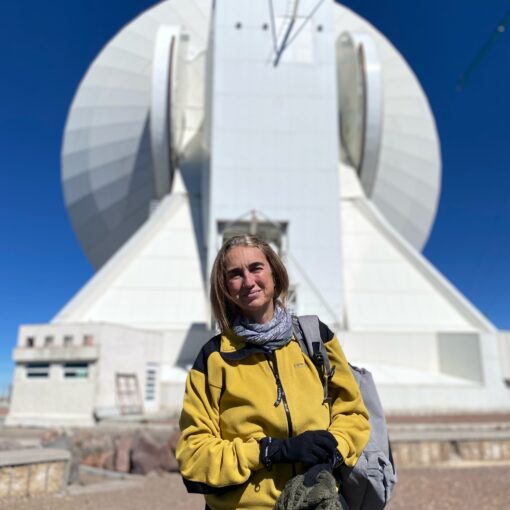Also available in: Español (Spanish) Euskara (Basque)
Martínez-Paredes, M.; González-Martín, O.; Esparza-Arredondo, D.; Kim, M.; Alonso-Herrero, A.; Krongold, Y.; Hoang, T.; Ramos Almeida, C.; Aretxaga, I.; Dultzin, D.; Hodgson, J.
Accepted for publication in Astrophysical Journal (arXiv: 2001.00844)
Abstract
We measure the 10 and 18μm silicate features in a sample of 67 local (z<0.1) type 1 active galactic nuclei (AGN) with available Spitzer spectra dominated by non-stellar processes. We find that the 10μm silicate feature peaks at 10.3+0.7−0.9μm with a strength (Si_p = ln f_p(spectrum)/f_p(continuum)) of 0.11+0.15−0.36, while the 18μm one peaks at 17.3+0.4−0.7μm with a strength of 0.14+0.06−0.06. We select from this sample sources with the strongest 10μm silicate strength (σ_Si10μm>0.28, 10 objects). We carry out a detailed modeling of the IRS/ Spitzer spectra by comparing several models that assume different geometries and dust composition: a smooth torus model, two clumpy torus models, a two-phase medium torus model, and a disk+outflow clumpy model. We find that the silicate features are well modeled by the clumpy model of Nenkova et al. 2008, and among all models those including outflows and complex dust composition are the best (Hoenig et al. 2017). We note that even in AGN-dominated galaxies it is usually necessary to add stellar contributions to reproduce the emission at the shortest wavelengths.

- [EN] An explanation of this paper for the general public can be found in the post “What is the distribution of dust around the most massive black holes in the universe?.
- [ES] La explicación a todo público de este artículo se encuentra en la entrada “¿Cuál es la distribución del polvo alrededor de los hoyos negros más masivos del Universo?”
- [EU] Publiko orokorrarentzako azalpena post honetan: “Zein da hautsez betetako materialaren banaketa zulo beltz masiboenen inguruan?”



